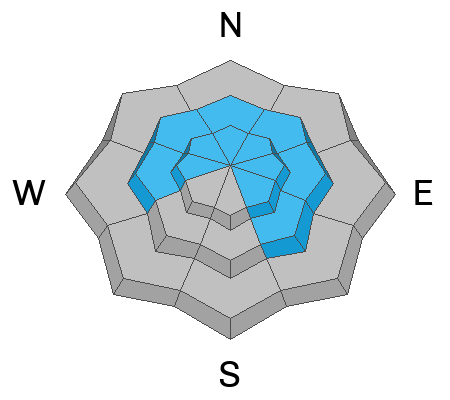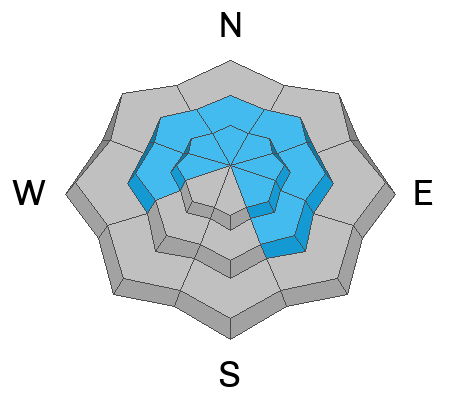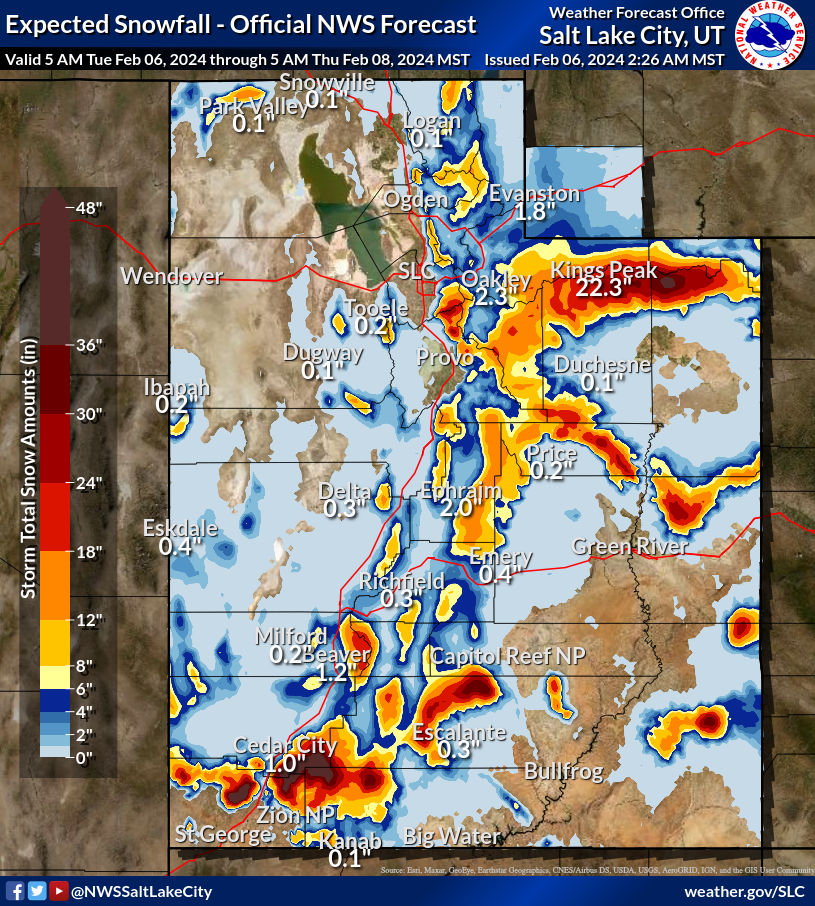Forecast for the Ogden Area Mountains

Issued by Mark Staples on
Tuesday morning, February 6, 2024
Tuesday morning, February 6, 2024
Today the avalanche danger is CONSIDERABLE above 8500 feet. Heavy snowfall and strong south winds since yesterday will make human triggered avalanches likely on any wind loaded slope.
At mid and low elevations, the avalanche danger is MODERATE. Watch for any slope with wind drifted snow, but also the new snow could make some soft slab avalanches.

Low
Moderate
Considerable
High
Extreme
Learn how to read the forecast here







